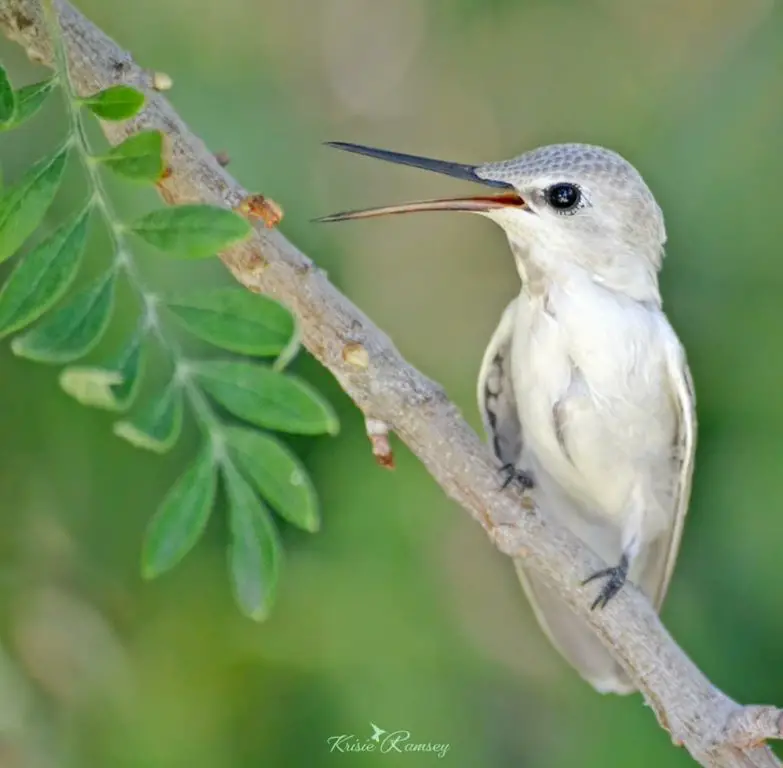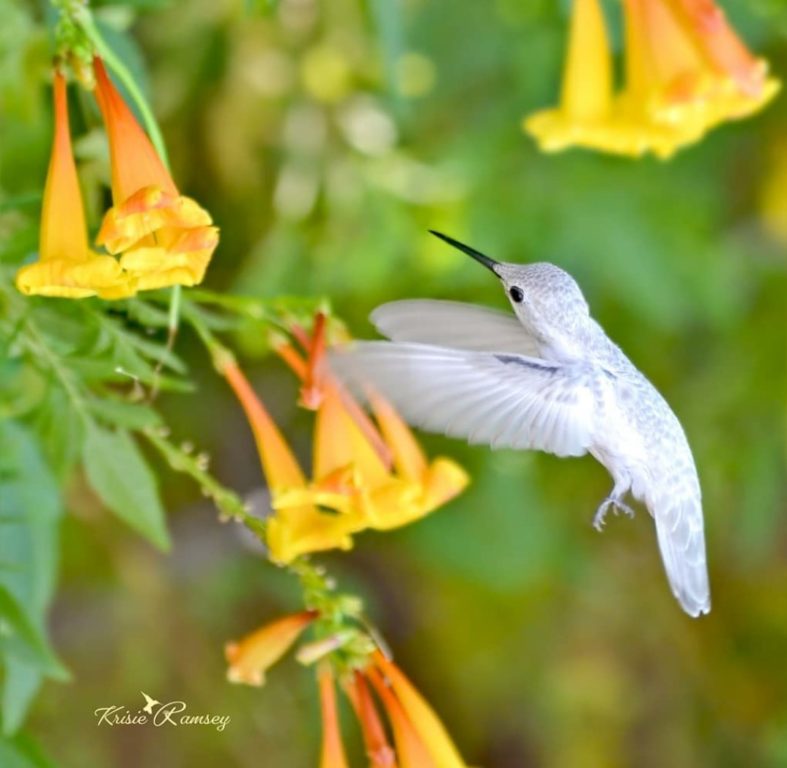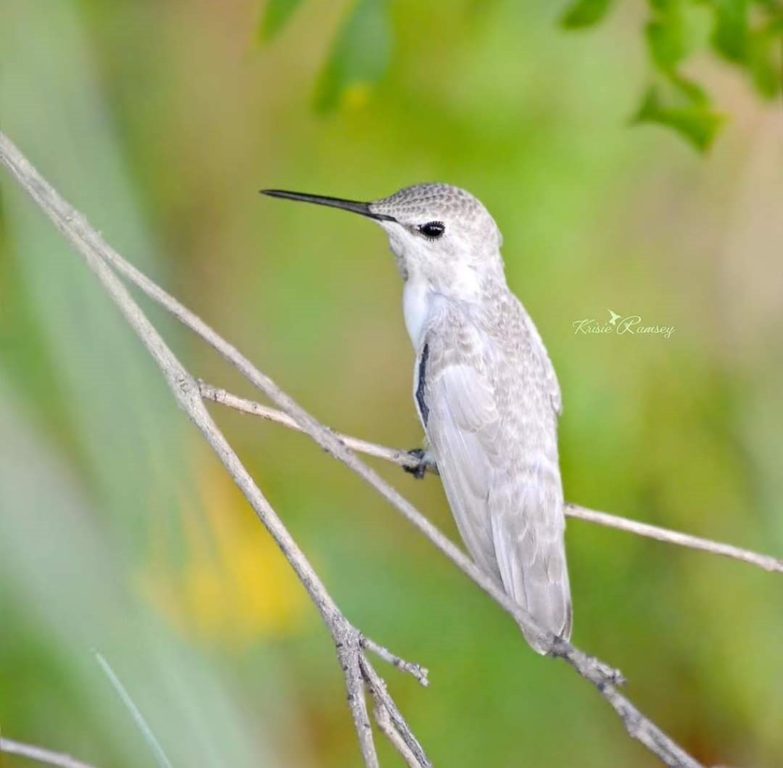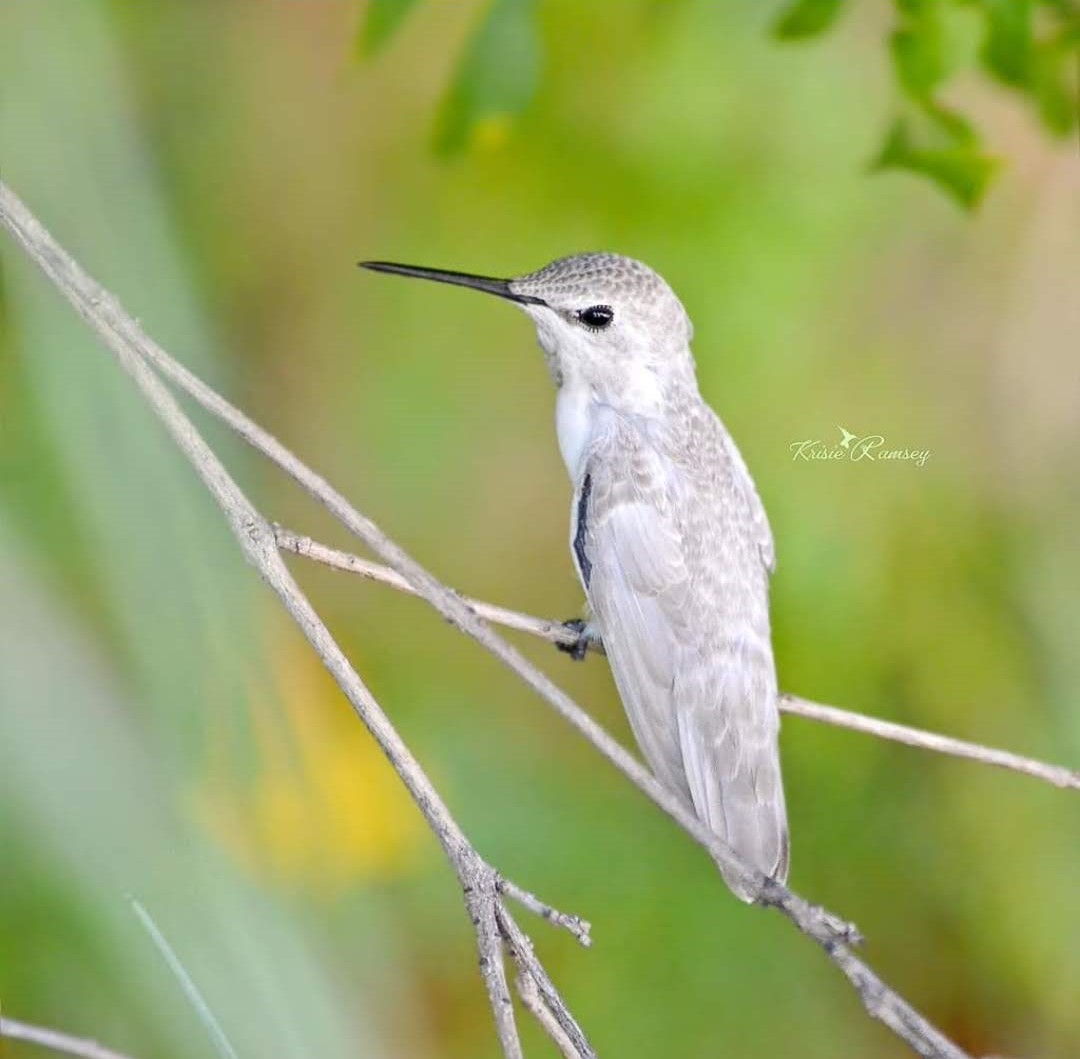This post contains affiliate links.
With any animal species, there is always that one conspicuous individual in the crowd who steals the spotlight. Whether it is a white snake, tiger, alligator, shrimp, plecostomus or a hummingbird! Any animal can have albinism, a recessive genetic trait.
Are There White Hummingbirds?
Albino and Leucistic are the two types of white hummingbirds found in every hummingbird species.
Albinism is a hereditary disease caused by genetic mutation resulting in complete absence of melanin.
Leucistic is a subcategory of albinism that has enough melanin to cause distinctive identifiable features.
For a hummingbird, melanin is an essential part of producing skin tone, eye color, feather strength, and ultraviolet sun protection. The less melanin produced the lighter the color, the more melanin production the darker the color.
Hummingbird albinism is subdivided into two categories: Albino and Leucistic. These two groups are easily misidentified. Both types of sightings are sparse and uncommon, however leucistic hummingbirds are spotted more often than true albinos.
How can I tell if a white hummingbird is Albino or Leucistic?
The differentiating factors between Albino and Leucistic hummingbirds are the eyes, feet, and beak.
An Albino hummingbird’s eyes, feet and beak are pink due to the lack of pigment, allowing red blood vessels to show through as pink.
A Leucistic hummingbird’s eyes, feet and beak are black.
How rare is an Albino hummingbird?
Researchers have documented and seen less than 100 albino hummingbirds combined, reported in North, Central, and South America.
Genuine white albino hummingbirds are extremely rare and beautiful.
The exact and true figure of albino sightings is unknown because partial albinos or leucistic hummingbird sightings are being mixed and counted, creating skewed data.
Authentic albino hummingbirds lack melanin which results in having zero color or pigmentation in their skin, eyes, and feathers. This genetic mutation will make the hummingbird appear all white in color.
Their eyes, feet, legs, and even claws can look pink or red due to the red blood vessels becoming more visible in appearance through their white complexion.
The albinism trait is more susceptible to the offspring when both parents carry the recessive gene.
This hereditary disadvantage makes these hummingbirds a successful target to be caught by poachers and prey.
Researchers have captured and tagged albino hummingbirds to study, but have not been successful in finding them the next year to further their research.
Following up previous investigations without successfully locating the original hummingbird makes documentation of albino hummingbirds extremely difficult, therefore, the longevity of an albino hummingbird is undetermined by experts.
If you are lucky enough to spot an albino hummingbird out in the wild or at a feeder it is recommended to take as many pictures as possible, since they are rare.
Share them with wildlife groups and on social media to spread the word and the wonderful sightings of these beautifully exquisite and rare creatures.
What is a Leucisitc hummingbird?
Leucistic hummingbirds are a subcategory of albinism and are able to produce some melanin, therefore their eyes, feet and beak will not be pink. Their white feathers may present with irregular color patterns or dots limited to combinations of grey, brown, tan or beige.
Leucistic hummingbirds under its subdivision category of albinism are seen more often than true albinos. A poor diet can result in a leucistic hummingbird struggling to produce melanin.
The small amount of pigment that the leucistic hummingbird produces is displayed as a patchy or spotty combination patterns of grey, brown, tan or beige.

Photo by: krisieramsey
Taken: Tempe, Arizona

Photo by: krisieramsey
Taken: Tempe, Arizona
Their color modifications make them extremely noticeable and eye-catching. Their grey and beige colorations can look similar to a Leucistic Mourning Dove.
The eyes and feet of a leucistic hummingbird are black. Their beaks can be tan or black in color.
Researchers still don’t have a clear answer if leucism in hummingbirds makes their appearance less desirable to a potential mate.
What are white hummingbird’s unique survival hazards?
- Easily identifiable in the wild
- Decreased ability to find food
- Weaker feathers
- Increased susceptibility to disease
- Group ostracization
- Desirable to Poachers
Being an unusual creature of beauty, albino and leucistic hummingbirds have extra obstacles to overcome in order to survive. These top six obstacles include:
Being easily identifiable, they can fail in their efforts to camouflage or hide in their natural surroundings for protection. White hummingbirds are easily targeted and extremely noticeable by other prey. They have a greater risk of being recognized at night by being a white mass standing in a sea of black. They are more susceptible to being eaten by cats or hawks at night.
Disadvantages and problems of locating nutrition to survive are due to their decreased sight and hearing compared to their peers. This causes them to have a slower response time which will subject them to potential predators. White hummingbirds have a better chance of surviving in a setting where they are protected in captivity.
White hummingbird feathers are weaker and more brittle than normally pigmented feathers. Due to its fragile state, the feathers tend to break easier and may make it more difficult for hummingbirds to fly during migration. This also puts a strain on the hummingbird’s ability to stay warm and insulated during the winter months.
White hummingbirds may be more susceptible to diseases and genetic abnormalities. These obstacles weed out the gene pool and promote survival of the fittest with more desirable traits.
Rejection by family members, potential mates, and social interactions are common. Their white visual appearance is extremely noticeable, receiving unwelcomed interactions from other groups. This is done to reduce the spread of genetic mutations and to keep their heritage line clean.
The rare and noteworthy light colored complexion is considered of value and is desired by poachers. This can lead to an increased number of deaths and be unfavorable for the hummingbird species.
Final Thoughts: Confessions of a True Albino Hummingbird
Dear Diary,
As much as I want to fit in with the rest of my relatives I am different. I am easily misidentified and by revealing my true identity will expose my impostures.
My eyes, beak, and feet are pink or red in color. My wings are brittle and my eyesight is diminished. I require extra care and would fare better in a protected environment.
Yet, I stand alone, lavishing in my own pure beauty as I am extremely rare and difficult to find.
Therefore, if you locate me when you are out in nature, enjoy my distinction, take a picture, lavish in the delight that you have memorialized my existence, and share me with the rest of the world.
Yours truly,
Confessions of a True Albino Hummingbird
Happy Hummingbird Watching!

Photo by: krisieramsey
Taken: Tempe, Arizona
Backyard Visitors participates in affiliate programs which compensate us for referring traffic.

